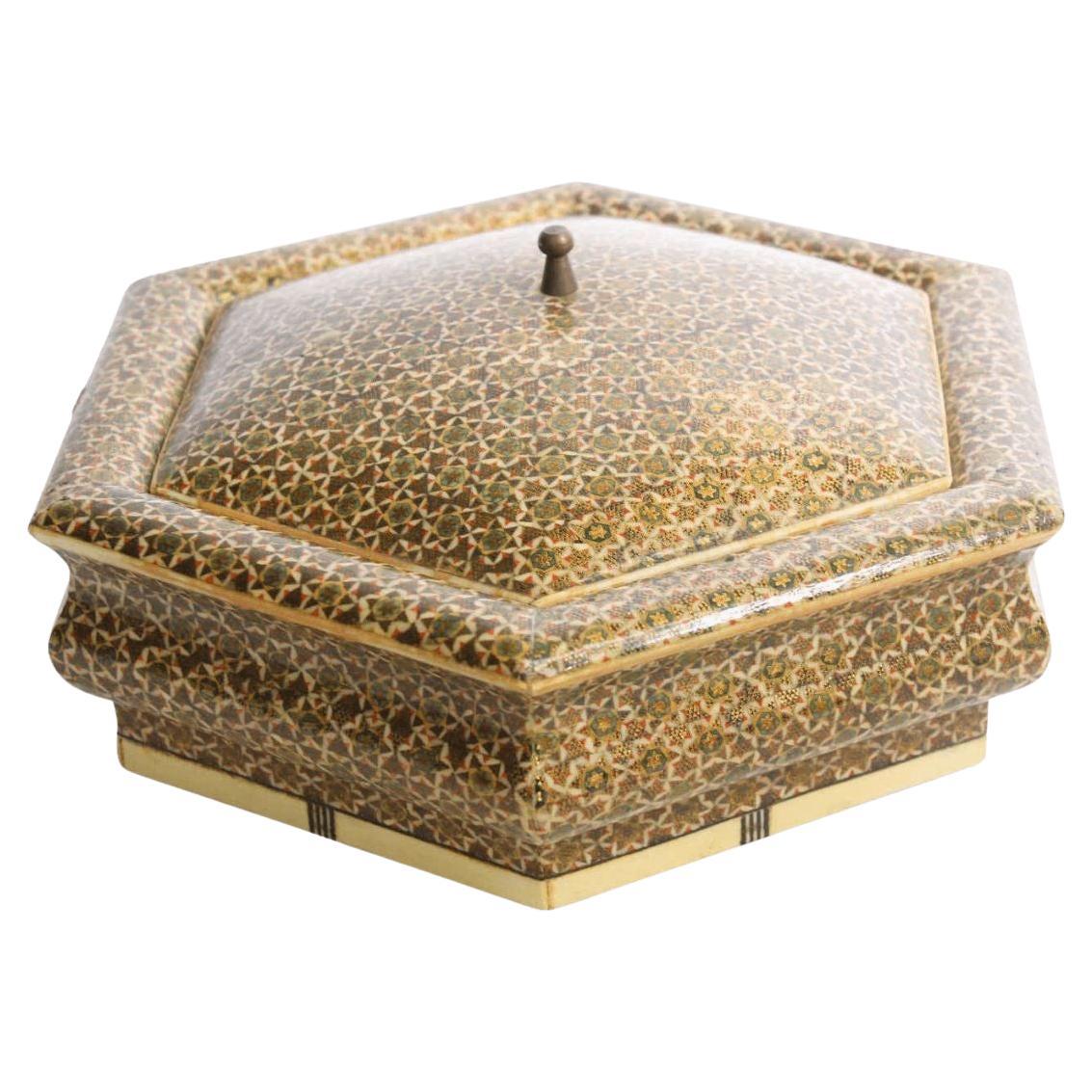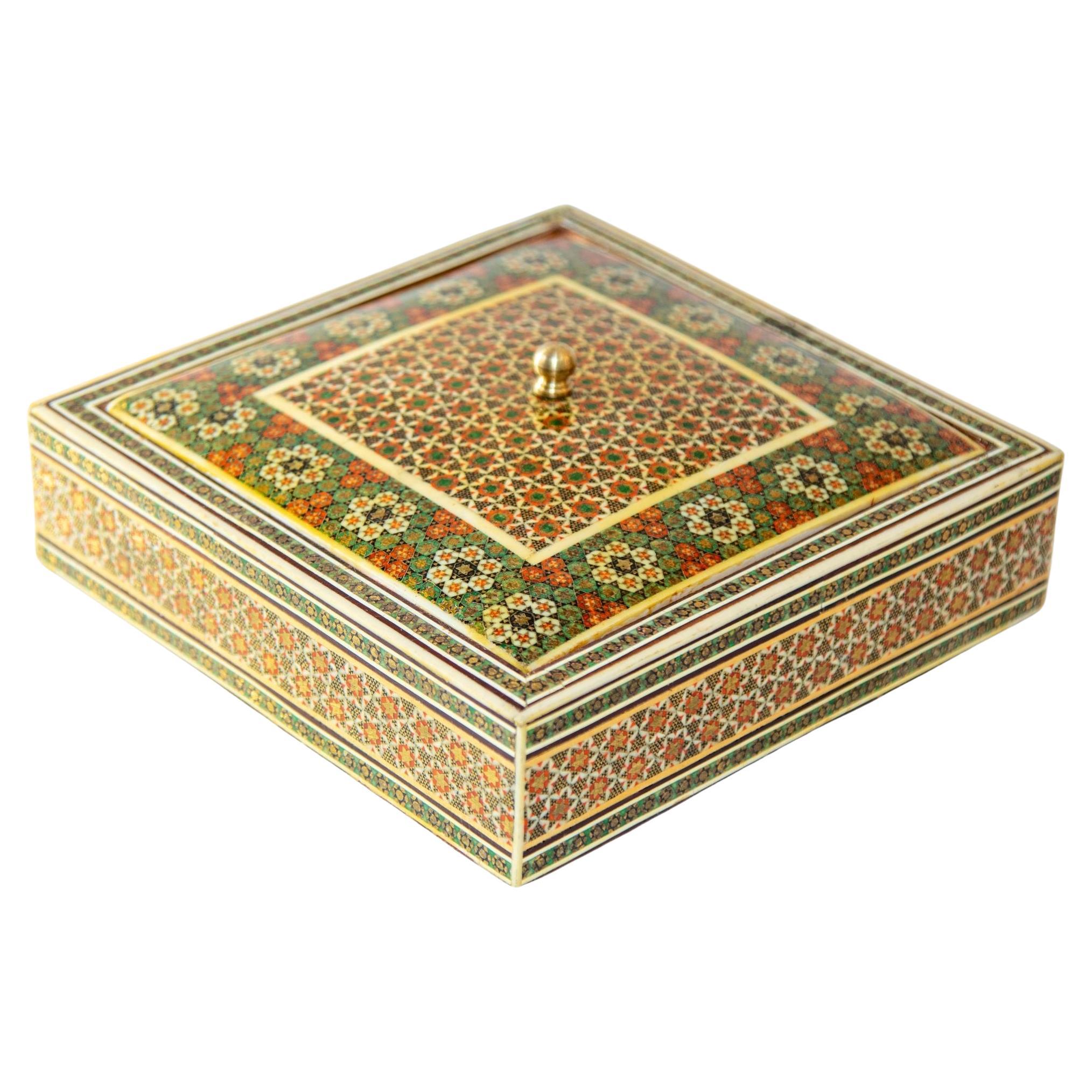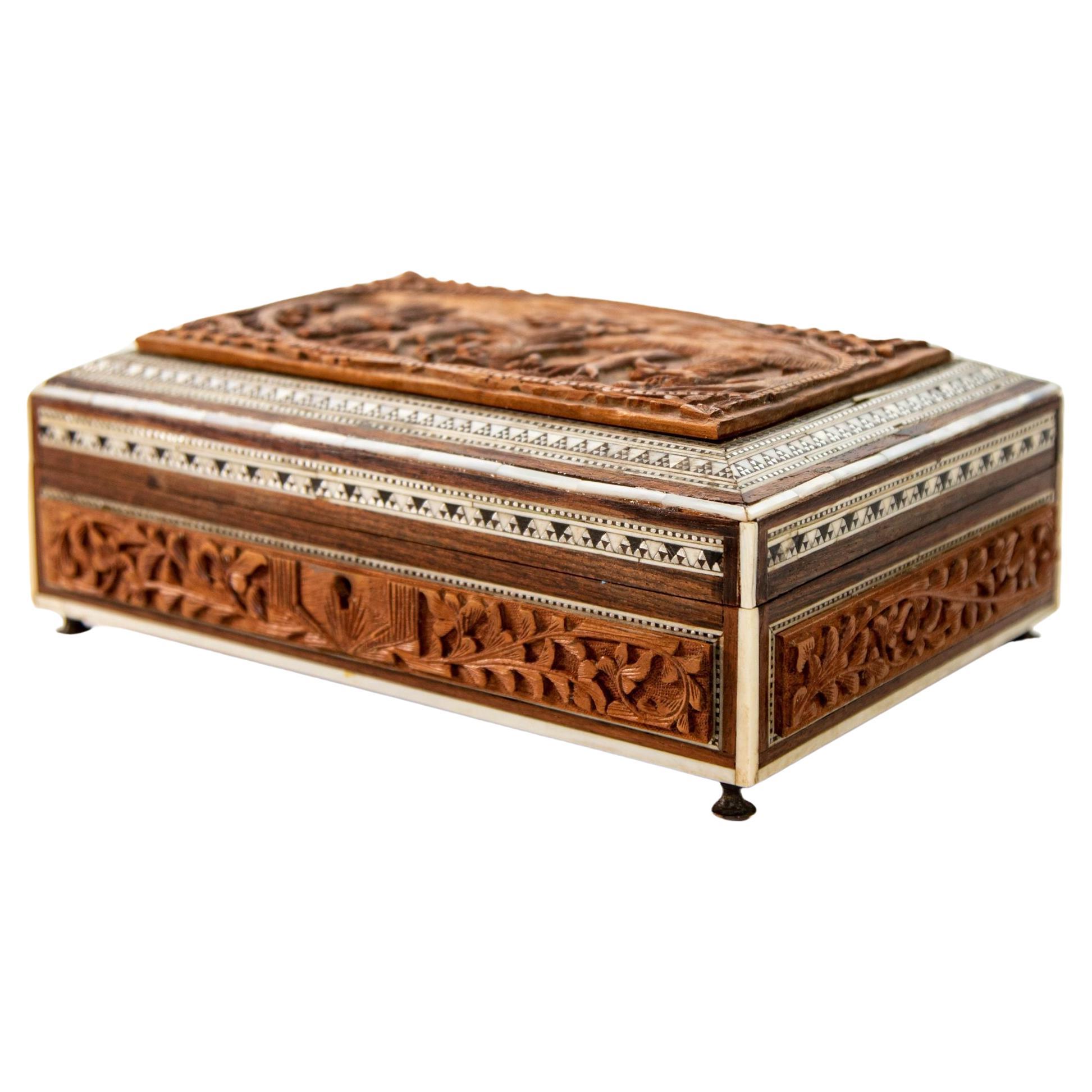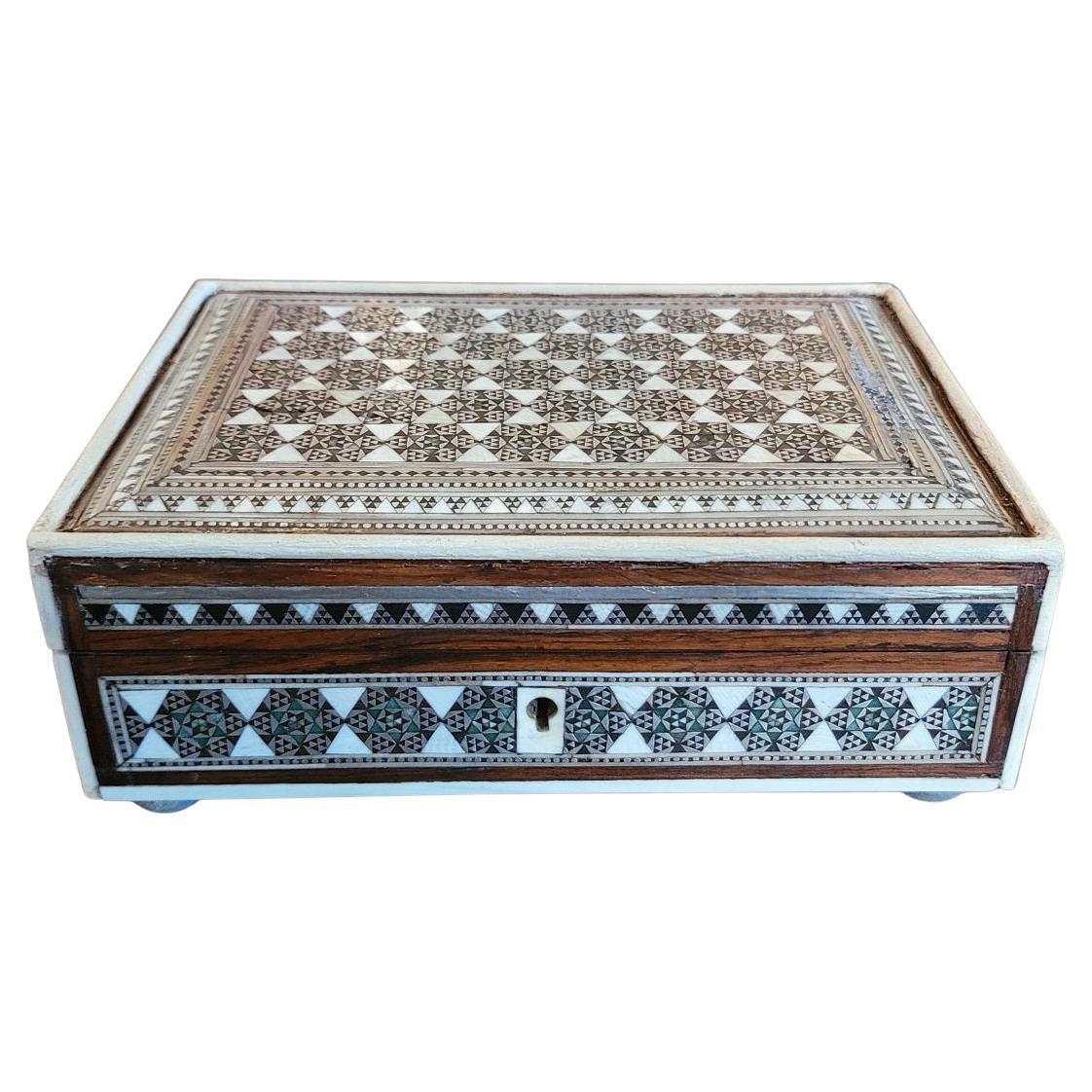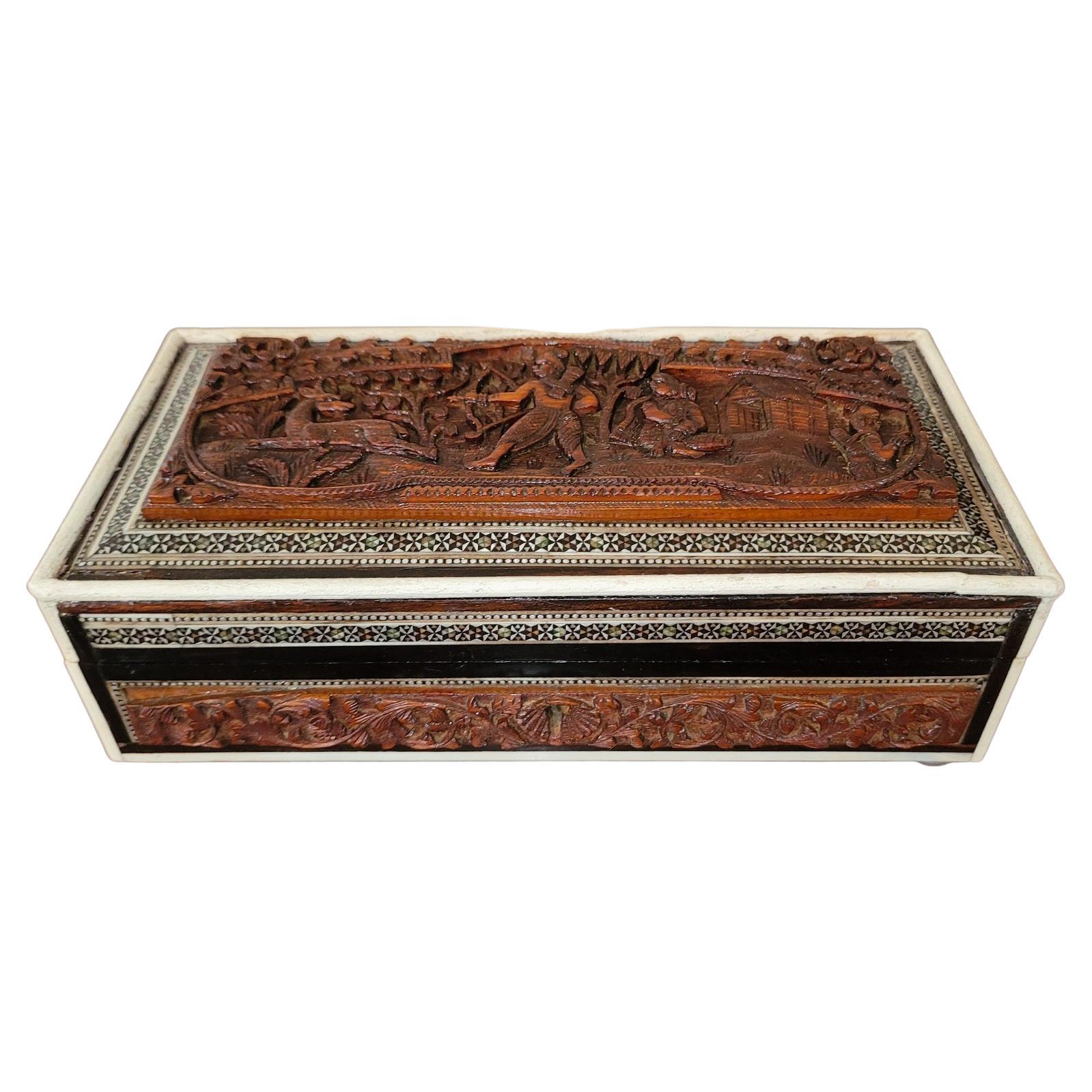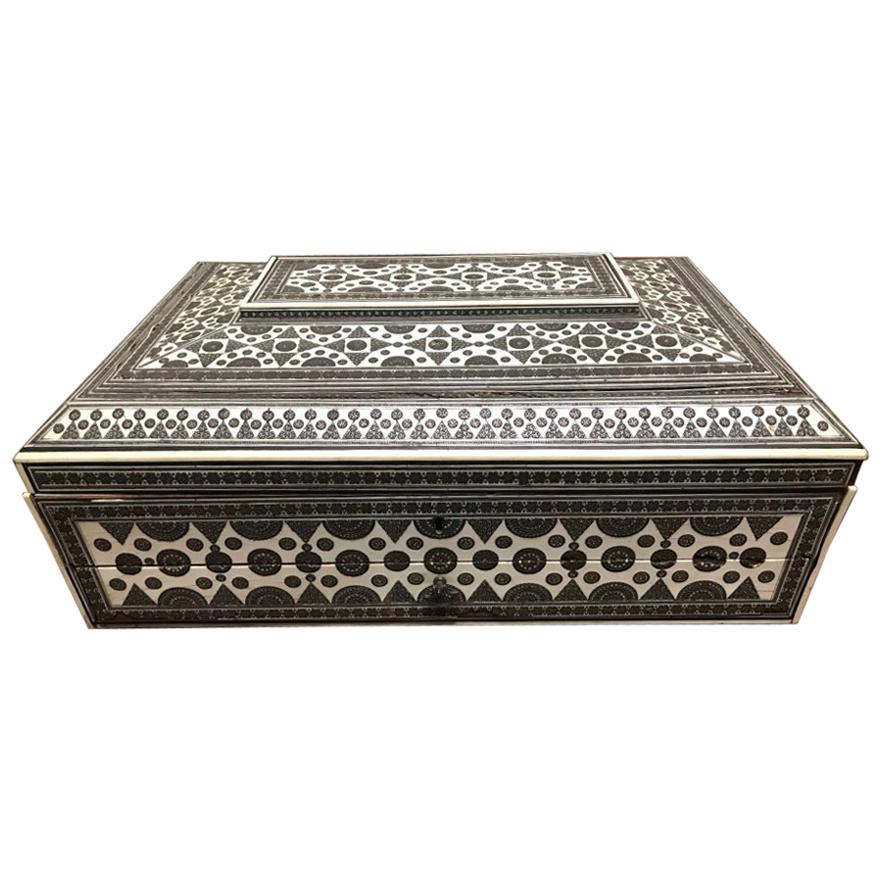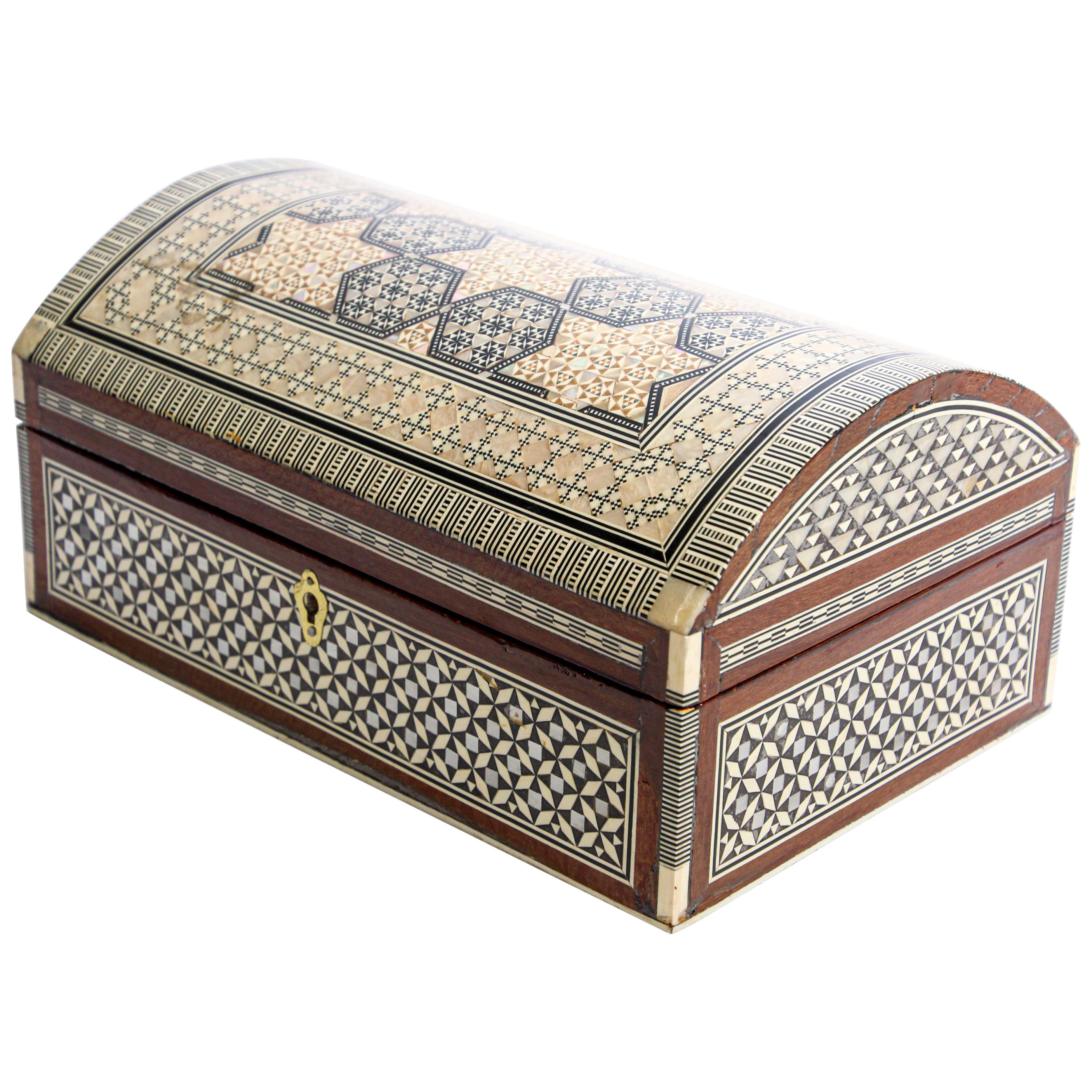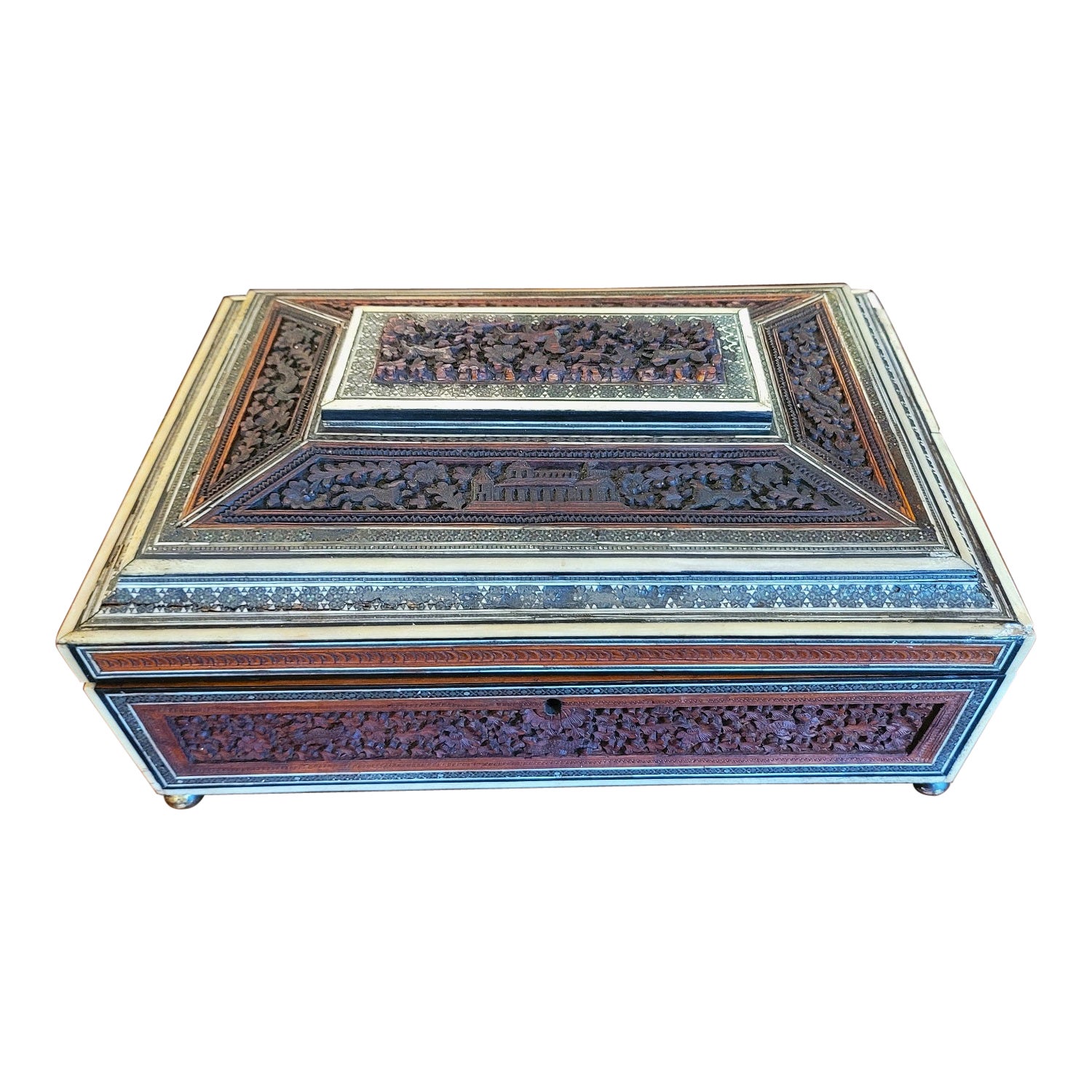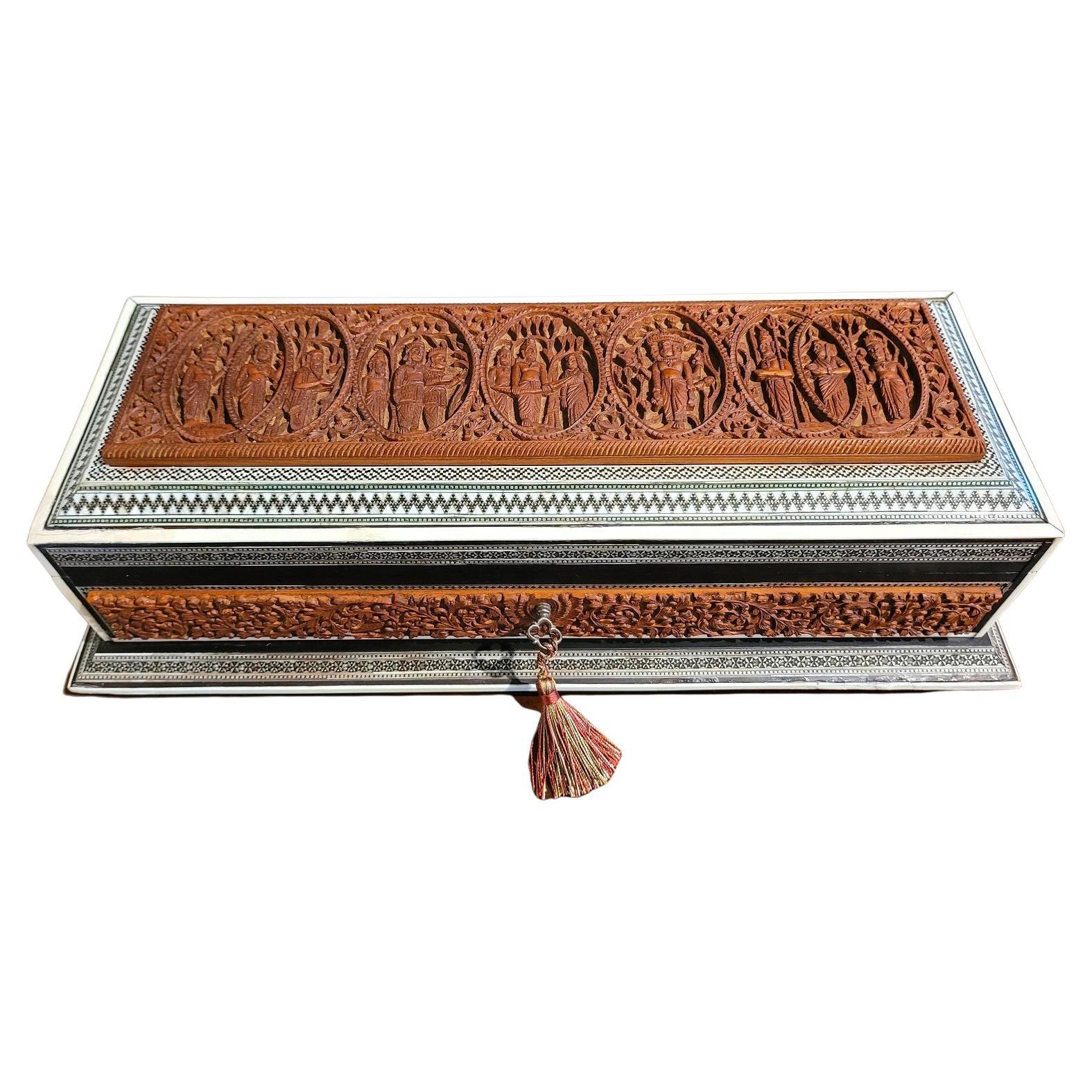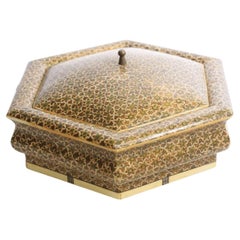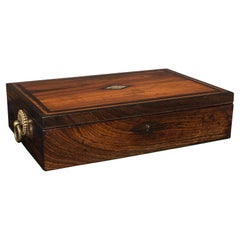
An Indian Sadeli-Ware Box
View Similar Items
1 of 2
An Indian Sadeli-Ware Box
About the Item
You May Also Like
- Anglo Indian Micro Sadeli Mosaic Inlaid Hexagonal BoxLocated in North Hollywood, CAAnglo Indian Moorish style micro mosaic inlaid jewelry box with lid. Intricate inlaid Anglo Indian box with floral and geometric Moorish Sadeli design in an octagonal shape form with micro mosaic marquetry, very fine artwork. Museum collector piece like the one in Doris Duke Islamic Art Museum. The repeating geometric patterns of Sadeli Mosaic...Category
Early 20th Century Moorish Jewelry Boxes
MaterialsFruitwood
- Antique Campaign Correspondence Box, Indian, Sadeli, Colonial, Regency, C.1820Located in Hele, Devon, GBThis is an antique campaign correspondence box. An Indian, rosewood and Sadeli mosaic colonial writing case, dating to the Regency period, circa 182...Category
Antique Early 19th Century Indian Decorative Boxes
MaterialsWood
- 1950s Anglo Indian Micro Sadeli Mosaic Inlaid Jewelry BoxLocated in North Hollywood, CA1950s Anglo Indian Micro Sadeli Mosaic Inlaid Jewelry Box. DIMENSIONS: 7ʺW × 7ʺD × 2.5ʺH. Indo Persian Moorish style micro mosaic inlaid jewelry box with lid. Intricate inlaid Anglo ...Category
Mid-20th Century Indian Moorish Decorative Boxes
MaterialsFruitwood, Bone
- Antique Anglo-Indian Vizagapatam Jewelry Inlaid Sadeli Footed BoxLocated in North Hollywood, CAAntique 19th century Anglo-Indian jewelry, trinket footed box, inlay with ebony, mosaic marquetry Sadeli work and a carved Hindu scene on top. The box case is made from sandalwood wi...Category
Early 20th Century Indian Anglo-Indian Decorative Boxes
MaterialsWood, Bone, Mother-of-Pearl
- 19C Anglo Indian Bombay MOP Sadeli Mosaic Trinket BoxLocated in Dallas, TXPRESENTING a LOVELY 19C Anglo Indian Bombay MOP (Mother of Pearl) Sadeli Mosaic Trinket Box from circa 1875-85. Gorgeously detailed and hand-crafted ‘sadeli mosaic’ inlay, from the Bombay Area, with deep greens with silver, pewter, mother of pearl, bone and ebony in geometric patterns. The box case, is made of sandalwood but completely covered in MOP, bone, faux ivory, ebony and mosaic inlay. Edged with faux ivory and banded with a different pattern of sadeli mosaic. Some minor damage to the top (repair is obvious in pics) and ivorine replacements to some edging, but it still a BEAUTIFUL BOX and of real QUALITY! The mosaic work is FABULOUS! Box opens to reveal its original blue velvet lining. It sits on 4 (recently added) silvered button feet. SADELI MOSAIC: “Anglo Indian boxes were made in India for the English residents from the early part of the 18th century. They were brought back or sent back to England usually by the people who had commissioned them. From the beginning of the nineteenth century they were imported more commercially, although not in any significant numbers until the middle decades. They were very highly valued, especially the early ones, to the extent that the designs were copied on late 19th and early 20th century tins. The ancient art of Sadeli Mosaic is said to have been introduced from Shiraz in Persia via Sind to Bombay, a long time before the Anglo Indian boxes were made. It was a technique, which required a high degree of skill and patience. It was executed very lavishly, in that the frequent cuts wasted a great amount of the precious materials used. The workmanship was however more than commensurable to the value of the materials. Ivory, silver, pewter (or other metals), wood and horn were cut into faceted rods which were bound together to form geometric patterns. When the glue has set, the rods were sliced in transverse sections. This gave the maker a number of angled circular pieces in the original pattern. Several variations of patterns could be achieved by combining the materials in different ways. The ivory was sometimes dyed green to give an extra color. The mosaic pieces in a combination of patterns, often separated by ivory, ebony, horn or silver stringing were used to veneer sandalwood boxes. In the early boxes, which date from the turn of the 18th to the 19th century, there are large panels of mosaic covering tops and sides of boxes. It took incredible skill to cover such large areas without any shakes or wavering of the pattern. The corners and joins on these boxes are impeccably matched. The makers (reputed to be Persian) of Sadeli mosaic made in the first two decades of the 19th century displayed a total understanding of the qualities of the different materials they used. They combined substances, which can expand and contract according to atmospheric conditions with others, which are hard and unyielding. The result was a sharp definition of the lines and patterns, which made up the whole design. On the early boxes the designs look deceptively simple. The fact is, they emerged from a culture, which had mastered geometry and understood how to generate a pattern from a set number of points. The patterns are so harmoniously combined that their incredible complexity is not immediately apparent. The earliest Sadeli boxes...Category
Antique Late 19th Century Indian Anglo-Indian Jewelry Boxes
MaterialsSilver
- 19C Anglo Indian Carved Padouk Wood and Sadeli Mosaic BoxLocated in Dallas, TXPRESENTING A LOVELY 19th century Anglo-Indian Carved Padouk Wood and Sadeli Mosaic Box, featuring a carving of a Hunt Scene. Made circa 1870 in Bombay, India during the Rule of th...Category
Antique Late 19th Century Indian Anglo-Indian Jewelry Boxes
MaterialsSilver, Pewter
Recently Viewed
View AllMore Ways To Browse
Indian Horn Box
Micromosaic Decorative Box
Ladies Cigarette Case
Morici Watch Box
Wooden Bone
Sterling Snuff Box
Sterling Silver Box With Compartments
Chinese Boxes With Mother Of Pearl
Cigars Exotic Humidor
Indian Antique Decorative Objects
Black And White Bone Box
Antique Vanity Gothic
Imari Koro
Architectural Box
Hallmark Cigar Box
Burled Tea Caddy
Dog Tobacco Jar
Hygrometer Price
